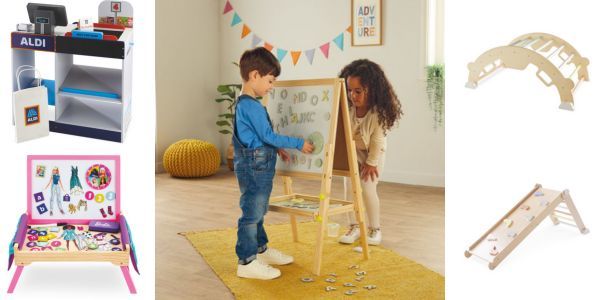.png)
.png)
Breastfeeding. Ahh the most natural thing in the world, right? Ready for a truth bomb?
It’s not always as easy as it looks. And although you’re (sort of) taught the mechanics of it in antenatal classes, the actual day to day doing can be so frustrating it can make you cry. So we’re here to bust some myths and give you some tips to make it a little bit easier.
Top 5 breastfeeding myths
- It’s the most natural thing in the world and you’ll instinctively know what to do. This just isn’t true, you’ll need to learn and practice. Don’t worry if it’s not perfect and takes a while to drop into place.
- Everyone can breastfeed. The vast majority of women can but some face physical or mental health challenges that make it impossible. There is NO shame in choosing not to breastfeed. Your boobs, your choice.
- Breast is best. WHO and UNICEF recommend that children breastfeed within the first hour of birth and are exclusively breastfed for the first 6 months of life – meaning no other foods or liquids including water. This is the gold standard but reality check, not everyone wants to or can do this. Ultimately it's about being informed and understanding what your choices are.
- I’ve got small boobs and won’t make enough milk. Nope, the size of your boobs has nothing to do with how much milk you produce. In fact you can have massive norks and not much milk at all.
- It hurts. Yep, it will feel a bit uncomfortable as you get used to it but it could be that your baby isn’t latching or you have mastitis.
And now we’ll run down some top hints and tips to help you on your breastfeeding journey. Remember if you’re struggling ask your midwife, health visitor, GP or breastfeeding specialist for help. There are often local (free) breastfeeding support groups too.
-
Understand when your baby wants to feed
It’s best to breastfeed on demand but how do you know they want a feed? Watch for your baby crying (obvs), raising or turning their head, opening and closing their mouth or licking their lips. It’s fine to feed little and often, and as long as they keep gaining weight you’re feeding the right amount. -
Get comfortable
When you’re uncomfortable breastfeeding can feel like a chore and disturb your baby. It can also give you pain in your back, shoulders and neck. Find a chair or position in bed where you can relax. Proper back support helps and have everything to hand that you need including a drink, snack, your phone and a burp cloth. Try different positions and angles until you find the right one for you. -
Relax
Is the environment calm? If you’re tense or nervous when breastfeeding, your baby picks up on it and they tend to fuss and not latch properly. Take a few minutes to relax your mind and body, find a peaceful spot, take a few deep breaths and feed when you’re ready. Stress can affect your milk supply so chilling out the best you can helps everyone. -
Take care of your boobs
Watch out for any signs of mastitis. And if you suffer from cracked nipples check your latch and feed with the boob that doesn’t have the sore nipple. Let your nipples air dry after feeding, then put some nipple cream and a nonstick nursing pad on. Some mums find cool wet tea bags, cold compresses or cabbage leaves help too. You can also safely take paracetamol when you’re breastfeeding. -
Take your lead from your baby
No matter how much you’d love to plan when to breastfeed, your baby probably has other ideas. It’s best to feed the baby when they want as this helps your milk supply and stops engorgement (overfilled boobs). -
Drink plenty
Sadly we don’t mean sauvignon blanc. Always drink a glass of water before your breastfeeding session and during if you can, dehydration can affect your milk supply. -
Avoid dummies and bottles
It’s a good idea to avoid bottles and dummies until you’ve got breastfeeding firmly in place. Babies quickly get used to the fast flow from bottles and the firmness of teats so it’s best to leave them alone for the first few weeks if you really want breastfeeding to work. -
Get your breastfeeding supplies
Make sure you have everything to make your breastfeeding experience easier and comfortable, like decent bras, breast pads and a breast pump. -
Skin-to-skin contact
Skin-to-skin contact warms your baby and makes them comfortable. That initial skin-to-skin helps your baby attach and latch on to your breast and develops your bond. It also stimulates prolactin and oxytocin and these hormones help your body to make and release breastmilk. -
Ask for help
Breastfeeding isn’t always easy so reach out for help. As well as your midwife and health visitor you can call the National Breastfeeding Helpline.
Found this useful? Read Where I went wrong with breastfeeding.
New baby and want some help and support? Join us on Facebook, over 70,000 mums who know exactly where you’ve been.


.png)







